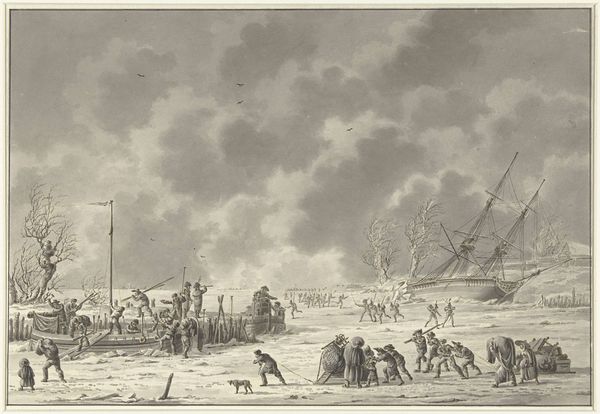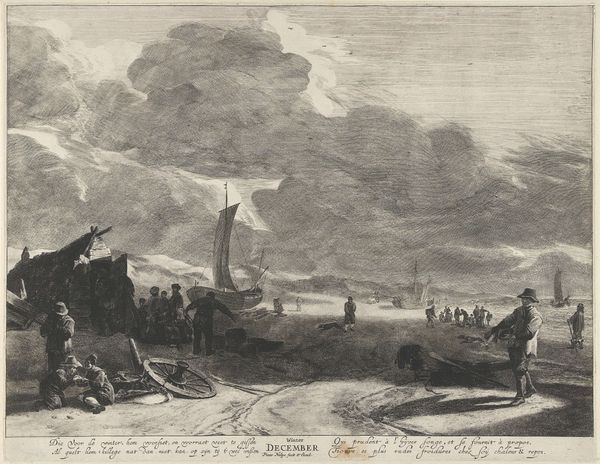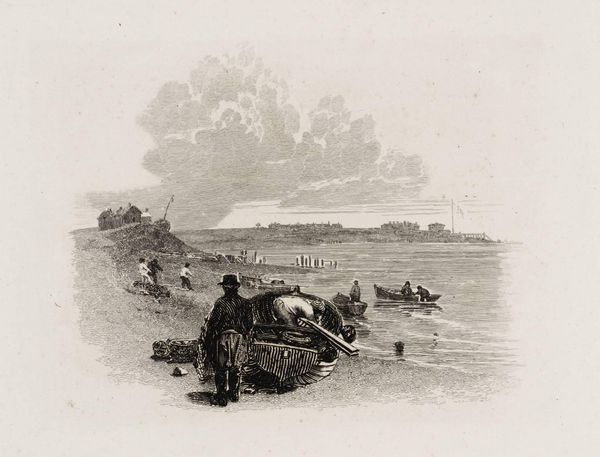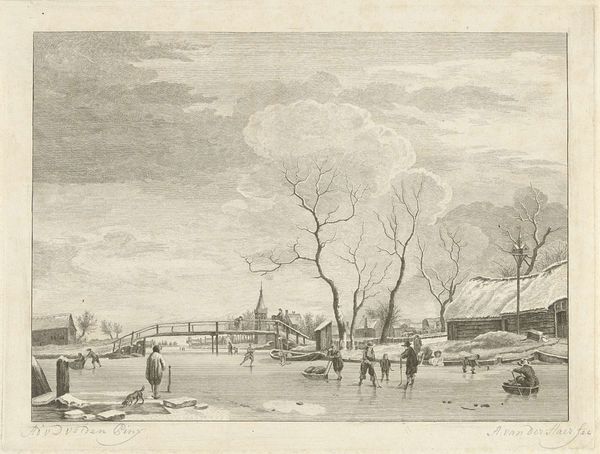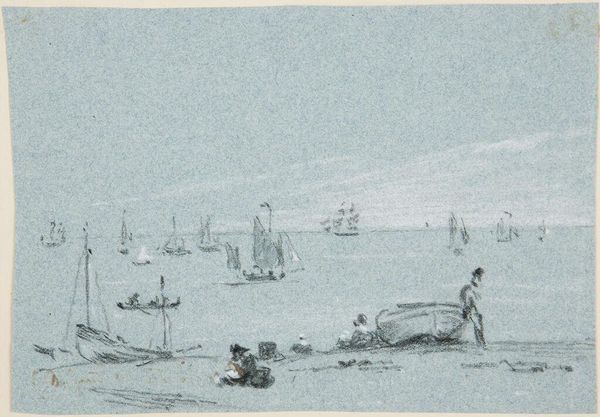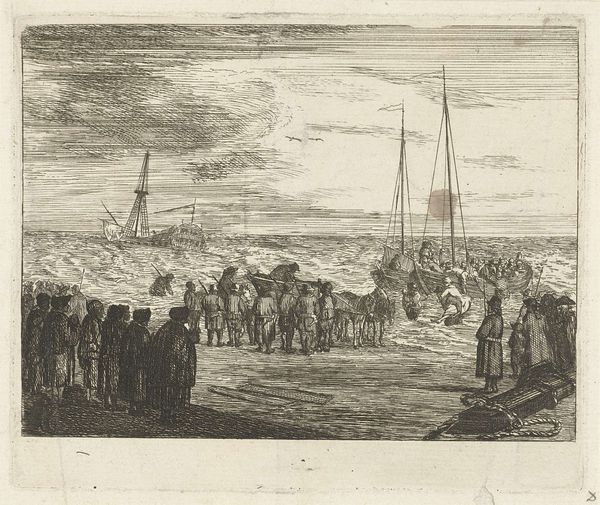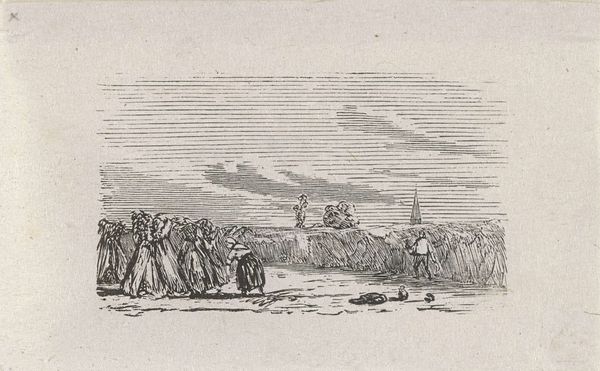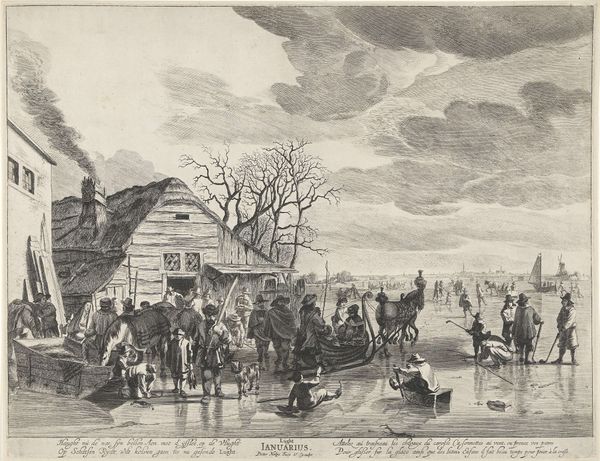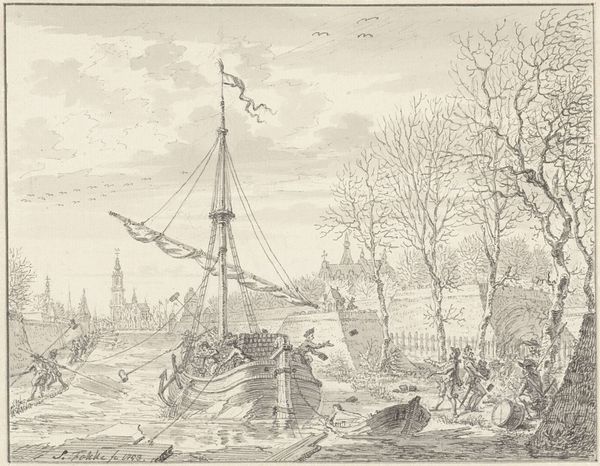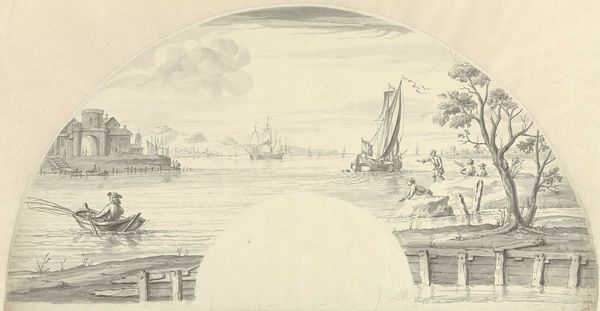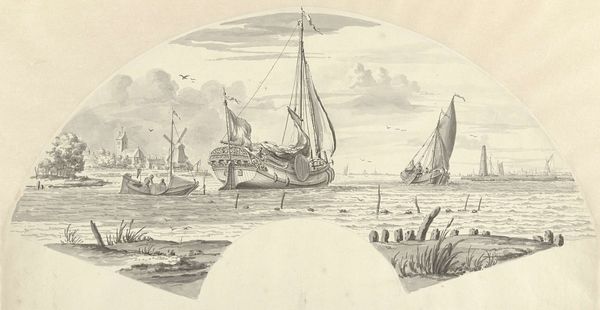
Dimensions: height 57 mm, width 87 mm
Copyright: Rijks Museum: Open Domain
Curator: What a charming depiction of Dutch winter life! We're looking at "Skaters Resting by a Tent on the Ice," a drawing in ink on paper by Isaac Weissenbruch, dating from 1836 to 1912, residing here at the Rijksmuseum. Editor: There’s a stillness to it that's really striking. Even with the implied motion of skaters and wind, the somber grays give a sense of a paused moment, almost like a memory resurfacing from a cold winter long ago. Curator: Precisely. Weissenbruch captures a distinctly Romantic landscape—vast sky, diminutive figures—that was finding its way into genre paintings in this era. Look at how he uses delicate lines to evoke a mood of reflection within the everyday. These winter scenes, even though quite common at the time, spoke to larger cultural anxieties regarding the relationship between humanity and the natural world. Editor: That tent with its flag—is it purely functional, or is there something more to that symbol? A communal hub perhaps, against the perceived desolation? And observe the bare trees... They seem to carry a stark message of nature's dormant power, even while people play on its surface. Curator: Absolutely. It served as both refreshment stop and gathering place for the public—but that flag! Flags during this period were loaded with cultural significance, underscoring nascent national identities and claiming territory. Consider how genre painting like this helped form a shared national experience for those who lived in a country rapidly becoming more interconnected than before. The scene of the mundane now serving a larger societal role. Editor: So the ordinary ice scene transforms into a projection of the national narrative? This makes me ponder the psychological lure of ice, then and now: does it represent stability or potential danger, or does it become a reflective canvas upon which communities play out their fears and hopes? Curator: I’d say you’re absolutely right. And as a drawing intended for public view, consider Weissenbruch's role within this. He doesn't simply depict a scene but actively constructs the Netherlands in the minds of those beholding the scene. Editor: Beautiful. What started as a seemingly simple image opens into a world of complex social, emotional, and cultural significations. I think I’ll view ice-skating quite differently from now on! Curator: Agreed! It shows how art can illuminate the intersection between the individual and societal psyche. A drawing offering the unexpected and subtle historical insights!
Comments
No comments
Be the first to comment and join the conversation on the ultimate creative platform.
